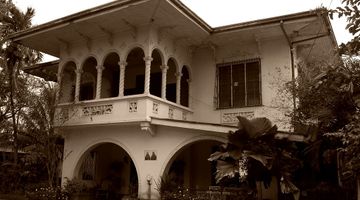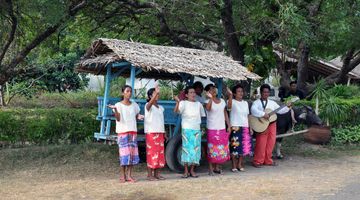Wedding in the Philippines – Customs and Traditions
Philippine wedding is a medley of influences from the pre-colonial times and the years spent under the Spanish and American colonizers. Being a predominantly Catholic country, couples go for a church ceremony while we also see a rise in popularity of the so-called destination weddings. This is of course for those who can afford it.
How much does it cost to get married in the Philippines?
A typical Filipino wedding with all its trappings such as a stretch limo, lavish receptions, and the like can cost anywhere between PHP300,000 to PHP1,000,000. Destination weddings obviously will cost more.
If one wishes to save then it is possible to cut it down to around PHP50,000 but it would mean plenty of work for the couple and their families. This is partly the reason why most couples go for a civil marriage. In fact, a 2016 census showed that 4 out of 10 marriages were contracted through civil rites. The same survey also shows that women marry at around the ages of 23-24 while men usually get hitched between the ages of 25-29.
Surprisingly, one would think that June would be the busiest time for marriages but that is not the case in the Philippines. May turned out to be the favoured month followed by February.
The engagement
Marrying in the Philippines is not a very straightforward affair. It's not as simple as buying a ring and popping the big question. Let's not even go into the courtship phase which could take years for some couple.
A Filipino wedding starts with what we call "pamamanhikan" where the groom and his family goes to the bride's home to meet her parents and formally ask for her hand in marriage. In the old days, a dowry is expected but a ring has become its modern replacement.
This is also usually the time to discuss some of the wedding arrangements such as the budget and who will be part of the entourage. Traditionally, the groom's parents are expected to pay for the wedding although the bride's side may offer some assistance. In recent times, some couples save up to pay for their own wedding.
After getting the blessings of their respective families, it is time to inform the rest of their clan. This tradition called "paalam" and it is the time when the couple personally visits their friends and families to break the good news of their impending wedding. The wedding invitations are also distributed.
Next comess what we call the “despedida de soltera” which is traditionally another pre-wedding event organized by the bride's family to celebrate their daughter saying goodbye to her single life. Owing to the American influence, this is now known as a stag party for the groom and bridal shower for the bride.
The Wedding Attire
Traditionally, the bride wears a Filipiniana or Maria Clara wedding gown which is a more intricate and dressy version of the baro’t saya while the groom wears Barong Tagalog – a sheer fabric attire made of indigenous materials and is worn untucked over a white singlet and black slacks. Today, however, the modern bride hires a couturier to make an all-white wedding gown similar to the American tradition. A lot of grooms still wear Barong Tagalog, a tuxedo, or a suit.
The Wedding Ceremony
Whether the couple decide to go for a civil or church wedding, they would have to apply for a marriage license and attend required seminars and counselling to prepare them for their soon-to-be married life. It is recommended that the couple visit their local civil registrar for the specific requirements.
This is followed by the solemnization of marriage by the registered officer of the local civil registrar. This has to be done in the presence of two witnesses who are both of legal age. The marriage license is then released and the official NSO marriage certificate.
For church weddings, there are additional steps such as meeting the Parish Priest of the couple's chosen church, marriage banns, and confessions.
For civil marriages, the couple has to proceed to the Mayor's Office with the marriage license and a Letter of Intent to Marry. They will then be advised whether their preferred date is available. The wedding itself will be presided over by the City Hall Court's judge or the Mayor.
The Reception
No matter the type of the wedding, whether it's low key or a no-expense-spared affair, you can be sure it always ends up with a lavish feast.
Traditionally, weddings in villages can be compared to a town fiesta where everyone joins in the celebration and enjoys a feast of Filipino cuisine like lechon.
Today, the majority of couples hire a caterer and specify the expected number of guests, mostly close friends and relatives. The caterer also presents some menu options that suit the couple's taste and budget. A popular trend nowadays too is the buffet style reception as opposed to a sit-down style dinner.
In any case, the menu always consists of appetizers, main courses, dessert, and drinks. At any reception we've been to, we have almost always seen the same dishes. Lechon (pit roasted pig) is still very popular along with a myriad of Filipino favourites such as embutido (Filipino style meatloaf), relleno (stuffed chicken), pancit bihon (Filipino rice noodle dish), and a lot more. Popular desserts meanwhile are buko salad or buko pandan (coconut pandan dessert).
Wedding traditions
The program is also an important part of the reception. Now you will often see some of the things practiced during Western weddings such as cake cutting by the bride and groom as well as wedding toasts by the best man, maid of honour, and their respective fathers.
- Bouquet and garter tossing have seen more creative incarnations as of late and are usually incorporated in a game with the couple's single friends.
- Doves that symbolize peace and harmony or butterflies are also sometimes released.
- There is one thing though that is uniquely Filipino and are still widely practiced today – the money dance. In this tradition, the newlywed dance while the ninongs and ninangs or the godparents pin cash gifts on their clothing as a way to wish them wealth and happiness.
Despite the obvious Western influence on Philippine wedding, it is still nice to note that it has retained elements of the old times. Big or small, one thing remains true. A wedding is a union not just between the couple but their respective families too.

































































